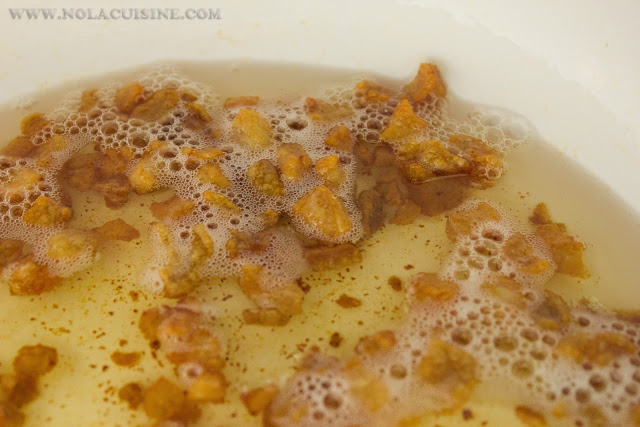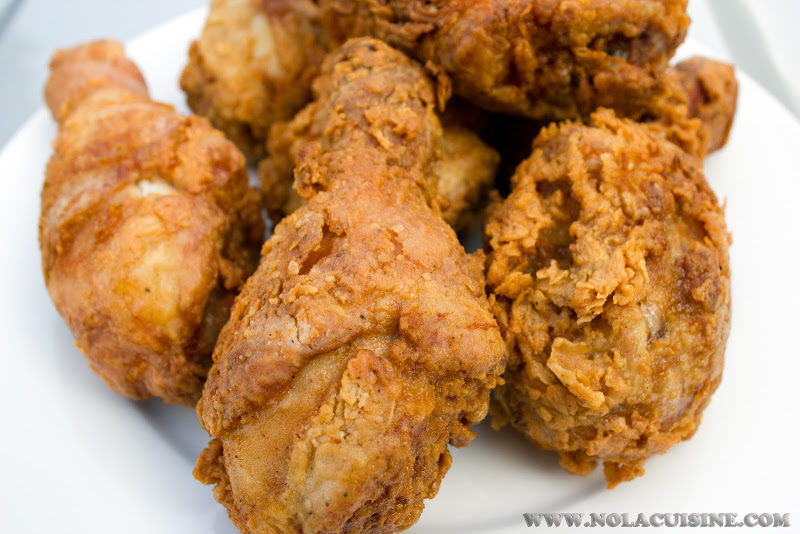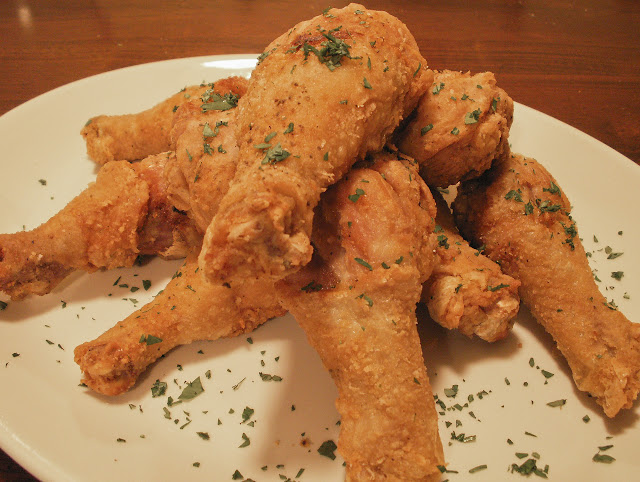



 by
by 
Lard…the four letter word. Like one of my other favorite four letter words, if used in moderation, it can add emphasis and an added oomph…and let’s face it, sometimes, just sometimes, there is no other word that can be used that will properly express your feelings as well as that four letter word.
Lard makes things taste good. I’m going to repeat that, because it bears repeating. Lard makes things taste good! That is all I’m really concerned about here on Nola Cuisine, making things taste good, and making people happy with food, and by people, I mostly mean me and my family. I share my thoughts and hope you enjoy them too.
Lard makes things taste good, when things taste good, they make me feel good, when I feel good, it lowers my stress level, and believe me, the stress is going to kill me far before the lard does.
I use lard in moderation mind you, I’m not condoning cooking every meal in lard, but when you’re making that Sunday supper of Fried Chicken…nothing is going to make that crust crispier or more flavorful than lard (unless maybe you add some bacon fat as well.) If you only make Pies once or twice a year and you KNOW that Leaf lard makes THE BEST pie crust, why not use it? How much is each guest going to have? One Piece? Two? If this were a pie eating contest you should be concerned. It’s not. Use what yields the best results.
When talking about lard, I’m talking about homemade rendered lard. I don’t like the stuff they sell in the grocery store, which is a mixture of lard and hydrogenated lard. It tastes funny in my humble opinion, it has a chemical like aftertaste. I’m not a chemist or a scientist, I don’t know what the hell they do to hydrogenate fats or oils (by the way I don’t want to know, for the comments section…kinda kidding). I do believe however that the processed foods are the foods that are killing us, or better said that we’re killing ourselves with. I’m not a crazy organic guy, but lets be honest, we’re killing ourselves with all of this mass produced crap. We really are, I’m no exception.
Make your own lard. Use it for special occasions, or for your favorite dishes where it applies. Use it in moderation and ENJOY it! Don’t stress about it! Enjoy life! Our culture has us stressed about everything under the sun, we’re afraid of our own shadows for God’s sake…it’s ridiculous. The dinner table is really our only place to relax (when we can even make it there), so when you sit down at the dinner table, relax! Free your mind and indulge in GOOD cooking and good company!
Here’s how to make homemade lard, the same application applies for duck fat…another post. (Stepping off of my soapbox)
How to make homemade Rendered Lard
2 lbs. Clean Fresh Pork Fat cut into 1/2″ cubes (I usually use back fat because I can find it locally. Leaf Fat is the best and is preferred for baking purposes)
1/2 Cup water
Some important notes:
*Use only CLEAN, FRESH fat. If the fat has an off flavor, your lard will have an off flavor. The fresher the better! I get my pork fat from a polish butcher here in Michigan where I live, who, by the way, also has a ton of house made rendered lard for sale! The polish word is “Smalec.”
*Cut the fat into equal sized pieces, this helps to prevent some pieces from geting too brown before others, which will give the lard an off flavor.
*Remove all lean meat from the fat before rendering.
*1/4 cup of water is added to the pot for each pound of pork fat. This keeps the fat from burning or browning in the pot, before the fat starts rendering. The water will evaporate away.
The Process:
Add the fat and water to a heavy bottomed pot or dutch oven:
Cook the fat and water at medium-high heat until you start to see the fat really start to liquify in the pot, turn the heat to low. Cook slowly for 1-1/2 to 2 hours. Your lard is ready when the remnants in the pot, now called cracklings are golden brown.
Strain the cracklings in a fine mesh strainer, obviously reserving your beautiful golden homemade lard.
Drain the cracklings on paper towels season them with salt and snack on them, or use them to make Crackling Corn Bread!
Place into a clean, dry container, I use a French Market Coffee can, and store in the refrigerator for at least six months. Use to make Fried Chicken that looks like this and tastes even better!
Buttermilk Fried Chicken Recipe
Be sure and check out my ever growing Index of Creole & Cajun Recipes which provides links to all of the recipes featured at Nola Cuisine!




 by
by 









